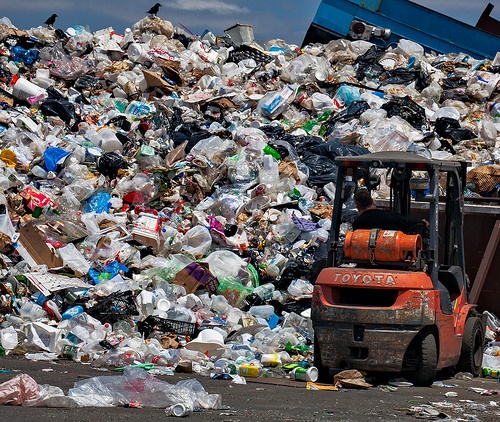The Occupational Safety and Health Administration (OSHA) and state worker protection agencies require employers to identify regulated carcinogens in their workplaces, to protect workers against hazardous exposures, and to provide information and training to reinforce those protections. OSHA regulations apply to dozens of chemical agents and other substances known to be human carcinogens, including 13 covered by a single “Regulated Carcinogen Standard.” Employers should also be aware that hundreds of additional chemicals are suspected carcinogens that should be considered.
Read MoreAudit, Compliance and Risk Blog
Tags: Employer Best Practices, Health & Safety, OSHA, Employee Rights, Environmental risks, Environmental, Hazcom
Among its many provisions, the 2016 Amendments to the Toxic Substances Control Act (TSCA) require EPA to compile and report an inventory of mercury supply, use, and trade in the United States. (I’ve written about programmatic changes to TSCA by the “Frank R. Lautenberg Chemical Safety for the 21st Century Act,” here, here, and here.) EPA was directed to publish an initial inventory, covering elemental mercury and mercury compounds, in April 2017, and to publish updates at least every three years thereafter.
Read MoreTags: Environmental risks, Environmental, Hazcom, tsca
EPA Schedules Compliance Deadline for Revised Agricultural Worker Training Requirements
Posted by Jon Elliott on Tue, Jul 24, 2018
In November 2015, the Environmental Protection Agency (EPA) adopted significant amendments to the Agricultural Worker Protection Standard (WPS) that EPA administers using its Federal Insecticide Fungicide and Rodenticide Act (FIFRA) authority -- FIFRA provides national pesticide regulation, and the WPS is intended to ensure that workers know how to protect themselves when applying pesticides. EPA set compliance deadlines for most revised provisions on January 2, 2017 or January 2, 2018, but left the compliance deadline for expanded training open until the agency could develop and publish training materials. On June 22, 2018, EPA published notice that these materials are ready, giving employers until December 19 to upgrade their training programs accordingly.
Read MoreTags: Employer Best Practices, Employee Rights, Training, Environmental risks, Environmental, EPA, Hazcom
EPA Proposes to Rescind Last Administration’s Long-Delayed Accidental Release Prevention Revisions
Posted by Jon Elliott on Tue, Jul 17, 2018
In the last week before President Obama left office, the Environmental Protection Agency (EPA) completed a multi-year review of its Accidental Release Prevention (ARP) program for toxic catastrophe prevention, and adopted significant expansions of ARP requirements (I wrote about them here). EPA proposed ARP revisions in March 2016 (I blogged about them here). Then, when President Trump took office, EPA reversed course, repeatedly deferring the effective date of those revisions while the agency reviewed them. In May 2018 EPA completed its review, and published a proposal in the Federal Register to rescind almost all these expansions and return ARP requirement to those in place before 2017. EPA also included an alternative proposal that retained a few more elements, and requested public comment on both versions no later than July 30, 2018.
Read MoreTags: OSHA, Environmental risks, Environmental, EPA, Greenhouse Gas, ghg, Hazcom, effluent, mact
On May 30, the Environmental Protection Agency (EPA) repealed a number of regulations governing recycling of secondary materials, which EPA adopted as parts of a major rulemaking effective July 2015, but which were rejected by a federal court in decisions issued in July 2017 and March 2018. These rules apply the Resource Conservation and Recovery Act (RCRA) by creating exemptions from the “Definition of Solid Waste” to define a number of potentially hazardous wastes as “hazardous secondary materials”, and to establish special rules to allow generators and qualified third parties to recycle and recover qualifying materials. (I summarized the larger 2015 rules here). The remainder of this note identifies EPA’s latest changes.
Read MoreTags: Environmental risks, Environmental, Hazcom, RCRA
Many of the items that make their way into your home are designed with only one purpose in mind. After you’ve opened up a bottle of champagne, the cage and cork become destined for the landfill. Once you’ve eaten all of the fruit out of the colourful plastic mesh bag, it can’t be recycled and it’s pushed into the trash bin. You can sit around getting blue about all the waste that abounds or you can do what I do and give those items a second chance at life.
Read MoreTags: Business & Legal, Environmental risks, Environmental, Hazcom, climate change, sustainability
The Resource Conservation and Recovery Act (RCRA) assigns the US Environmental Protection Agency (EPA) to define and then regulate “hazardous wastes.” RCRA provides EPA considerable discretion, and one way the agency applies that discretion is by separating hazardous wastes into a variety of categories that are subject to distinct waste management requirements. One basis for these categorizations is relative risk – the more hazardous the waste the greater the controls required, and the smaller the threshold quantities necessary to trigger regulation. Beginning in 1995, EPA has defined a limited set of lower-risk wastes as “universal wastes” subject to special rules intended to encourage recycling (40 CFR part 273). In March 2018, EPA proposed to add aerosol cans. The rest of this note summarizes universal waste requirements, and how EPA is proposing to apply them to aerosol cans.
Read MoreTags: Environmental risks, Environmental, EPA, Hazcom
A lot of time is spent shopping for the right look and for fashion that will flatter or get attention, but are we spending our dollars wisely to make sure that the clothes we wear today will not damage the environment in other parts of the world or in our own backyards tomorrow?
Read MoreTags: Environmental risks, Environmental, Hazcom, sustainability, corporate social responsibility
EPA Issues Annual Chemical Review Plan Under the 2016 Amendments to TSCA
Posted by Jon Elliott on Tue, Mar 13, 2018
The Environmental Protection Agency (EPA) has published its second Annual Plan for Chemical Risk Evaluations. These evaluation workplans are required by the 2016 Lautenberg Act amendments to the Toxic Substances Control Act (TSCA), as an expansion of EPA’s long-criticized efforts to evaluate existing chemicals for potential health and safety hazards. This new Annual Plan updates EPA’s efforts since 2016, and continues to formalize procedures.
Read MoreTags: Environmental risks, Environmental, EPA, Hazcom, tsca
EPA’s Latest National TRI Inventory Shows Continuing Reductions in Releases
Posted by Jon Elliott on Thu, Mar 08, 2018
The US Environmental Protection Agency (EPA) requires selected facilities to file Toxic Release Inventory (TRI) reports on either Form R or Form A, electronically to EPA and their state every July 1. These TRI reports are mandated by Section 313 of the Emergency Planning and Community Right-to-Know Act of 1986 (EPCRA; also known as SARA Title III since it was enacted as part of the Superfund Amendments and Reauthorization Act of 1986). (I summarized TRI reporting requirements here).
Read MoreTags: Environmental risks, Environmental, EPA, Hazcom










